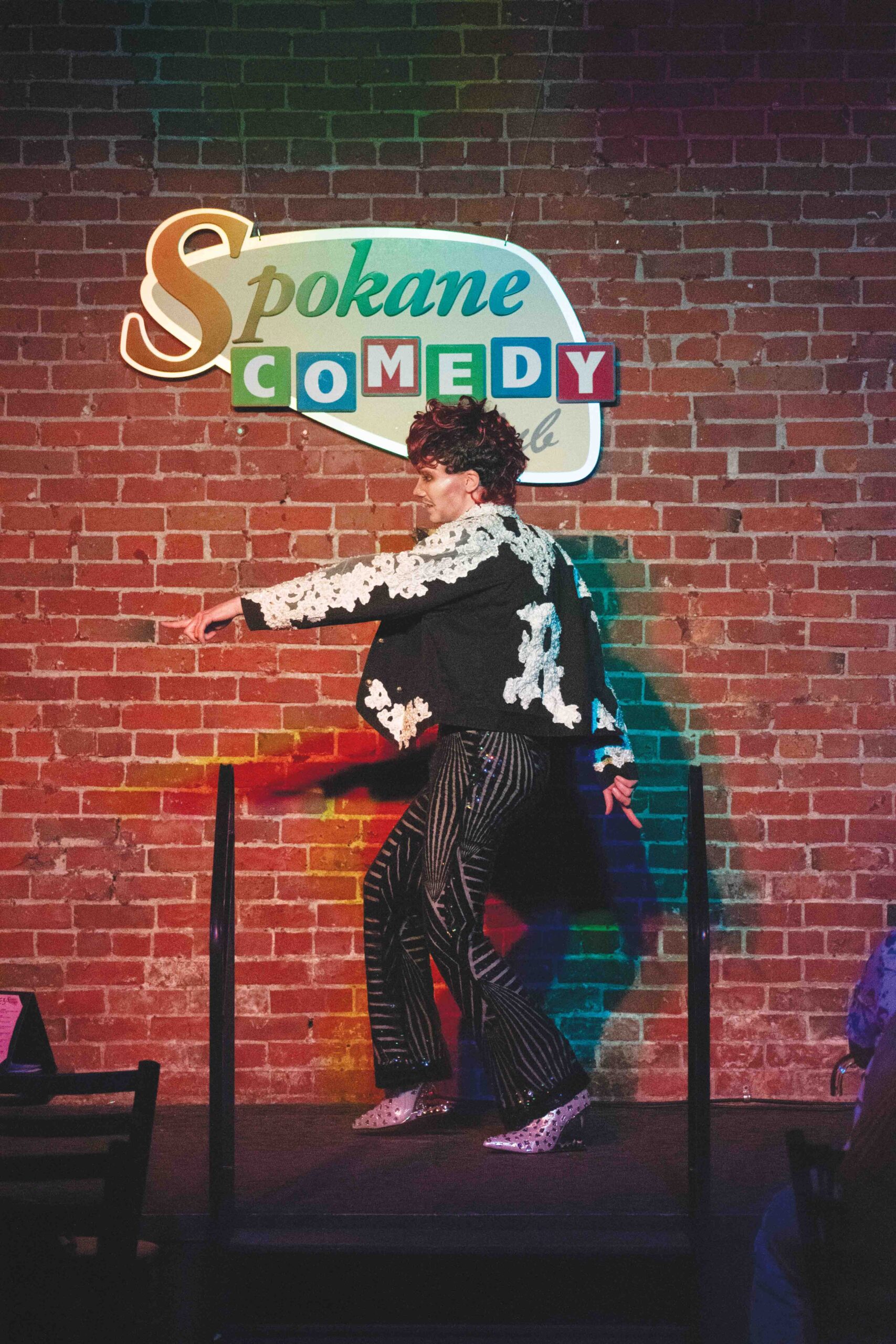Drag is an art form rooted in self-expression, political protest, and community. It continues to evolve, challenge gender norms and spark debate.
For performers like Roderick Van Schlong, a drag king from Idaho, his style of drag is about pushing the boundaries of masculinity with flair, color and creativity.
“There’s this assumption that masculine drag is boring, so part of what I do is challenge that,” Roderick Van Schlong said. “I still want to look masculine, but I also want to have fun with color, with energy (and) with creativity.”
Rodrick Van Schlong sees drag not only as an art form but as a way to inspire younger generations to embrace their identities.
“Drag is expression,” he said. “It’s about connecting with the audience, being able to take the image of a song or outfit in your head and just display it.
“I was raised in a small town, so being able to go to college and discover drag really changed my world.”
Rodrick Van Schlong also shared how drag has helped him reconcile multiple sides of him.
“Weirdly, doing drag, especially as Roderick, has actually brought me more in touch with both my masculine and feminine sides,” he said. “Growing up, I was expected to be a tomboy, and I thought girly things were gross. But drag helped me compare and equate both sides of myself. It made me more whole.”
Veteran drag queen Nova Kaine, who has been performing since 1988, talked about drag being deeply rooted in history and protest.
“Drag is an art form. It started as a protest,” Nova Kaine said. “In the U.S., a freed slave named William Dorsey Swann, who called himself the Queen of Drag, hosted balls in Washington, D.C., in the 1890s. He and his troupe wore discarded clothing from their employers and mocked the aristocracy. That was drag. A finger in the face of cultural norms.”
Nova Kaine, who grew up in Wyoming, described drag as gender rebellion, political protest, high art and low comedy. While recognizing the expanding diversity of drag styles today, Kaine emphasizes tradition and craft.
“When I started performing in the ’80s, drag was not mocking femininity. It was about elegance, glamour, and celebrating womanhood,” Nova Kaine said. “Now drag is about gender-fuck. It’s about showing up in a full evening gown and a beard. It’s about making the audience question everything and realizing that maybe it doesn’t matter.”
Nova Kaine also shared concerns about the generational divide in drag.
“The new generation thinks we hate them. We don’t,” Nova Kaine said. “But they think because they’ve built a persona online, that’s enough. Drag was born in a room, not a screen. The stage is where we find out if you’re real.”
Nikita Romanoff, a drag artist who performs across multiple platforms, sees drag as a vital space for freedom and visibility. She describes her style as dark and sensual.
“Drag allows me to explore the fluidity of gender and identity,” Nikita Romanoff said. “It’s not about fitting into boxes but about breaking them open. On TikTok and Instagram, I share my style and story, helping others feel seen and accepted.”
Nikita Romanoff emphasized the importance of social media in expanding drag’s reach and connecting diverse performers worldwide.
“People are finding their own styles and sharing them,” said Nikita Romanoff. “It’s connecting us in new ways.”
However, drag culture is not without its critics.
Anna Bohach, a vocal opponent, views drag as misogynistic and overly sexualized.
“I don’t like drag because I think it’s misogynistic and a mockery of women,” Bohach said. “I call it woman face. To me, it’s no different than blackface in minstrel shows.”
Bohach criticized the sexualization common in drag performances, especially male performers dressing as over-sexualized women.
“Drag is like a burlesque or stripper show — sexualized entertainment, not something I want my daughters to see,” she said.
Both Rodrick Van Schlong and Nova Kaine encourage the public to experience live drag performances.
“I think everyone should go to at least one drag show,” Rodrick Van Schlong said. “Even if they’re nervous or not sure what it’s all about. Watching it on TV is fun, but seeing it in person is a totally different experience. It’s powerful, it’s personal, and it’s a great way to support your local community.”
As drag continues to grow in visibility and variety, its performers and critics alike shape a broader conversation about gender, art, and expression in modern society.
For any comments or questions on this story, please contact Alycia Love at sfcc.alycia.love@gmail.com.
